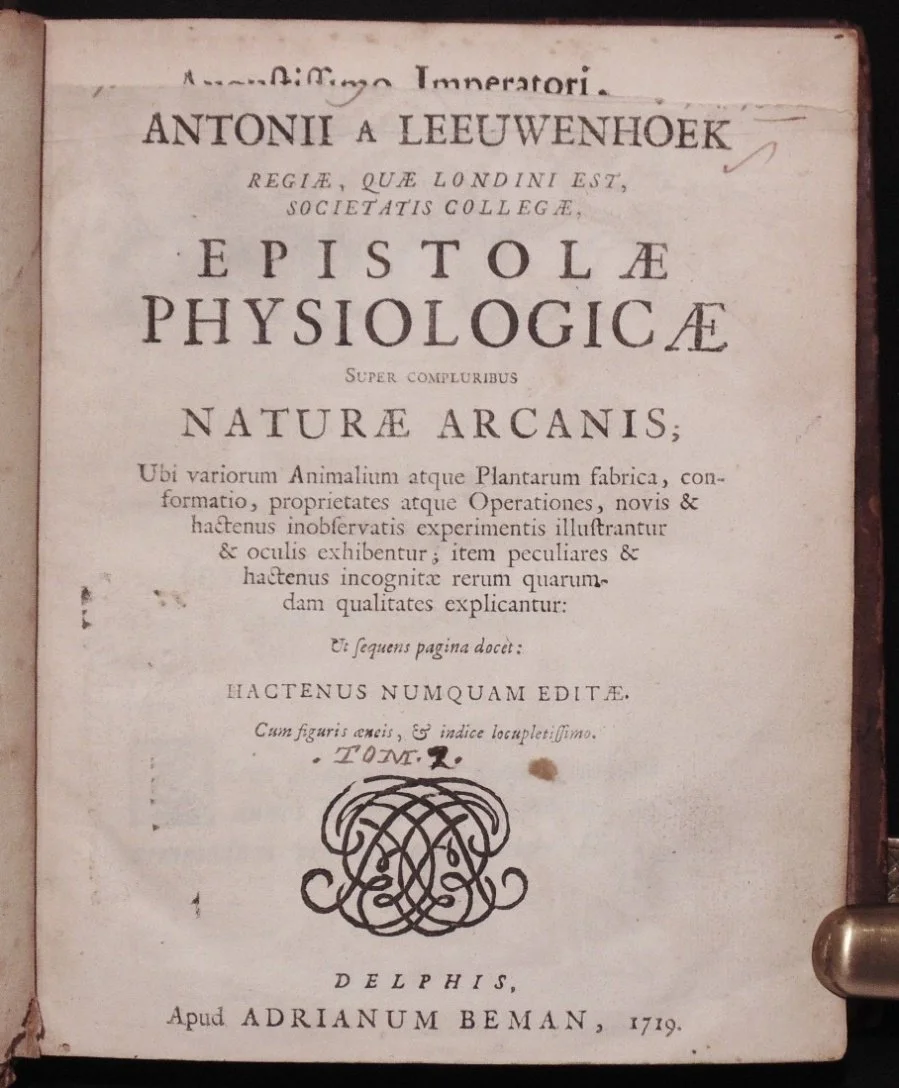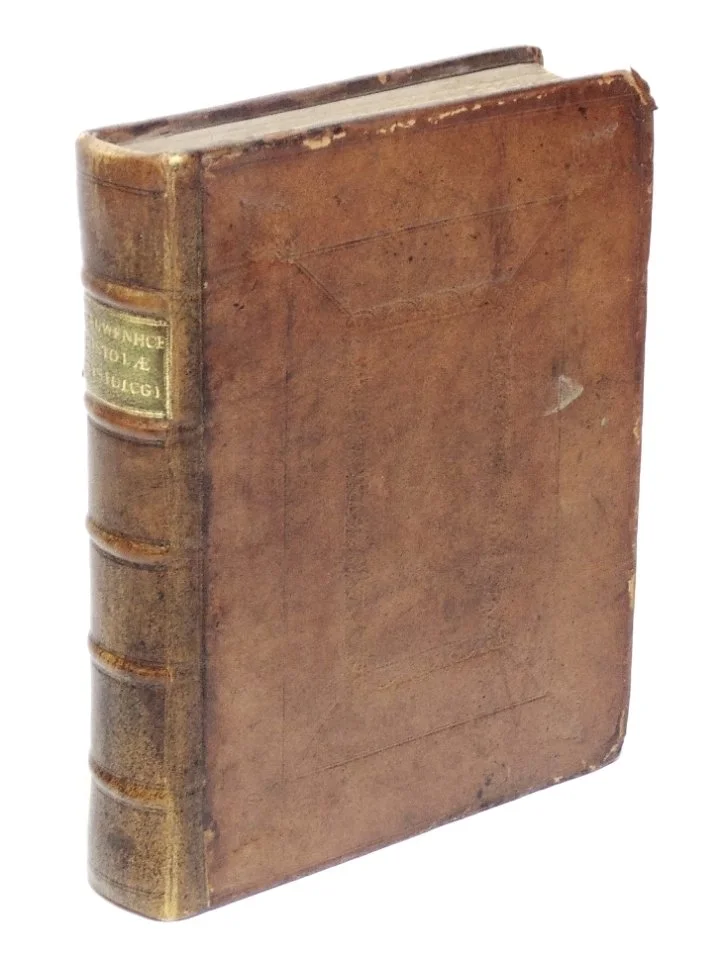The Father of Microbiology!
Leeuwenhoek, Antoni Van. EPISTOLAE PHYSIOLOGICAE SUPER COMPLURIBUS NATURAE ARCANIS (Physiological Letters about a number of the secrets of nature [etc.]: up to now never published). Adrianum Beman, Delt, 1719. Small quarto. [22], 446, [26] pp., + 31 engraved plates (9 of which are folding plates and 7 of which are smaller than a page). Van Leeuwenhoek wrote his letters in Dutch and never in Latin, This volume, published in Van Leeuwenhoek’s lifetime, is the first edition in Latin of 46 of Leeuwenhoek's letters describing his microscopic observations. It was apparently translated by Hugo van Rijn, as he reported in his 1725 book Oudheden en Gestichten. It was published as a stand-alone volume but is apparently one of four such volumes of his letters in Latin published during the period 1718 to 1722.,
Bound in early paneled calf boards, rebacked, with gilt titles on a green leather badge and raised bands on the spine. The binding is quite sound. The corners are worn. Missing the engraved frontispiece, but it includes the errata on final leaf verso. The title page has an early ink notation, and the upper margin has been trimmed. Scattered light foxing, primarily in the margins and the endpapers. One plate has an old paper repair to verso and a few appear trimmed. Very good overall.
Antonie Philips van Leeuwenhoek (1632 –1723) was a Dutch microbiologist and microscopist in the Golden Age of Dutch art, science and technology. A largely self-taught man in science, he is commonly known as "the Father of Microbiology", and one of the first microscopists and microbiologists. He is best known for his pioneering work in microscopy and for his contributions toward the establishment of microbiology as a scientific discipline.
Raised in Delft, Dutch Republic, Van Leeuwenhoek worked as a draper in his youth and founded his own shop in 1654. He became well-recognized in municipal politics and developed an interest in lens making. In the 1670s, he started to explore microbial life with his microscope. Using single-lensed microscopes of his own design and make, he was the first to observe and to experiment with microbes, which he originally referred to as dierkens, diertgens or diertjes. He was the first to relatively determine their size. Most of the "animalcules" are now referred to as unicellular organisms, although he observed multicellular organisms in pond water. He was also the first to document microscopic observations of muscle fibers, bacteria, spermatozoa, red blood cells, and crystals in gouty tophi, and was among the first to see blood flow in capillaries. Although Van Leeuwenhoek did not write any books, he described his discoveries in chaotic letters to the Royal Society, which published many of his letters in their Philosophical Transactions.
$1,250, including shipping within the US. International shipping at cost.
===========================================================================================
This book is offered on this website only at the moment. Shipping to US addresses is included. Shipping to destinations outside the US is at cost. Payment can be made by bank transfer, Paypal or check. Email us at books@stanleylouisremarkablebooks.com to inquire or purchase.





